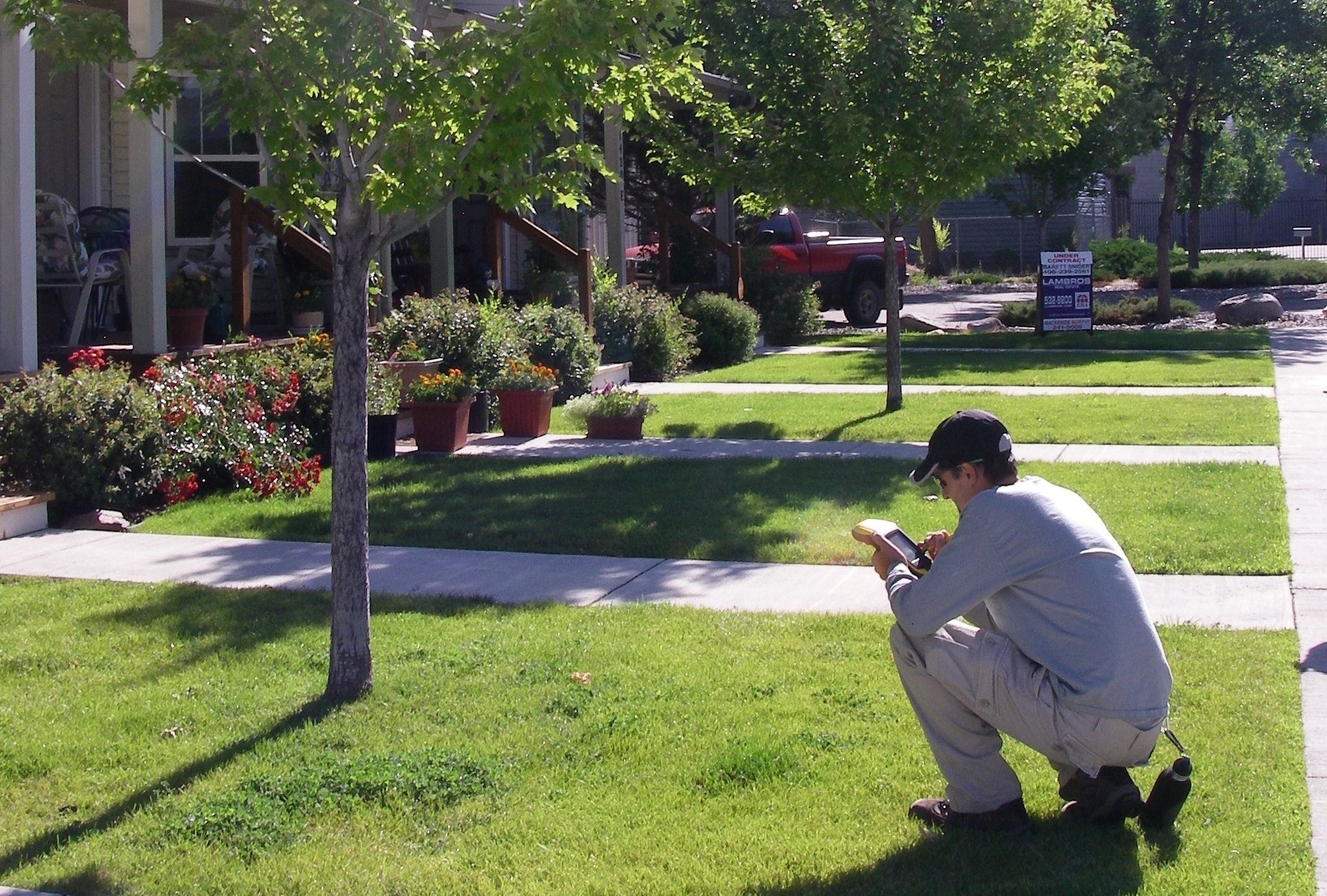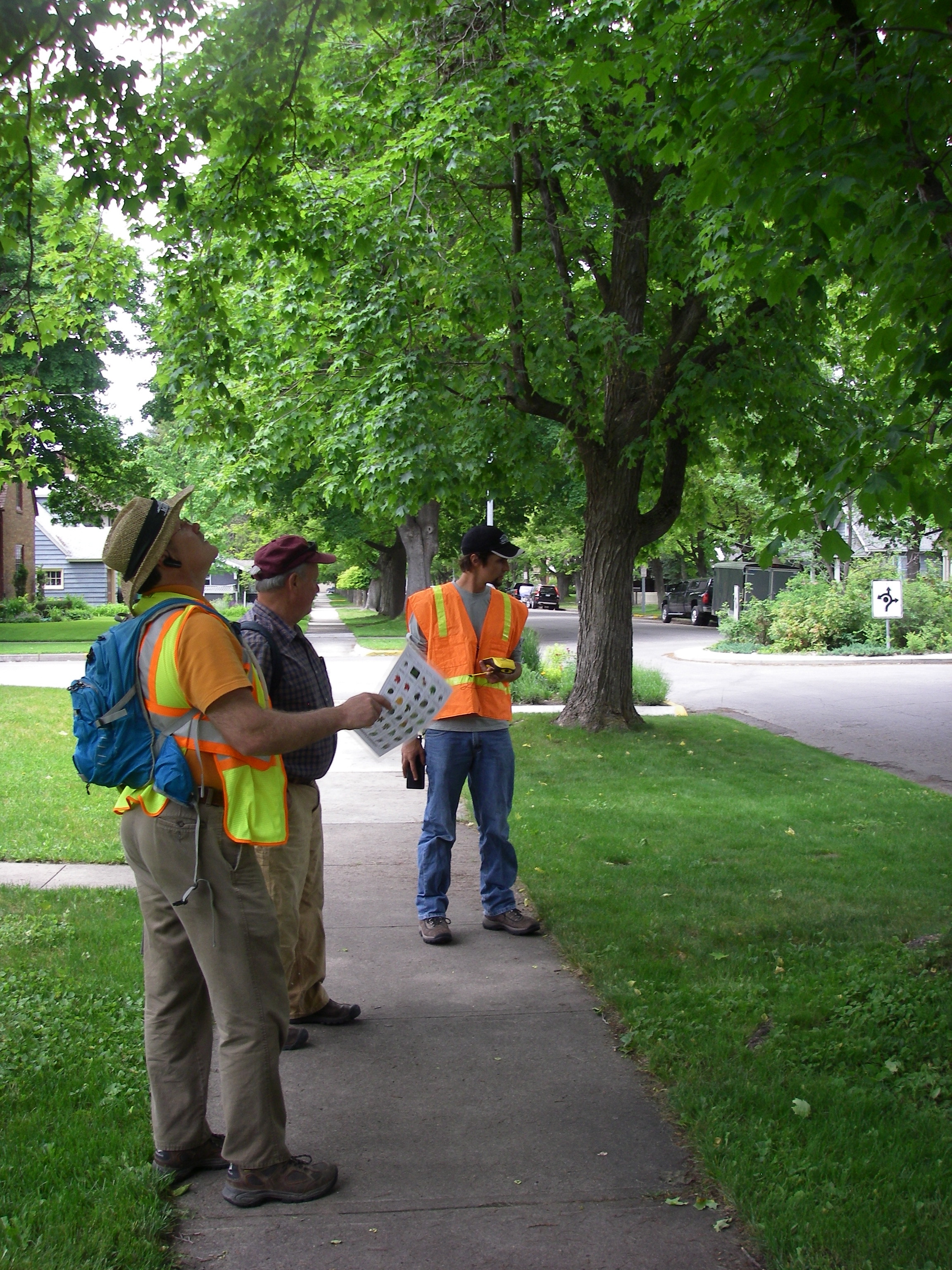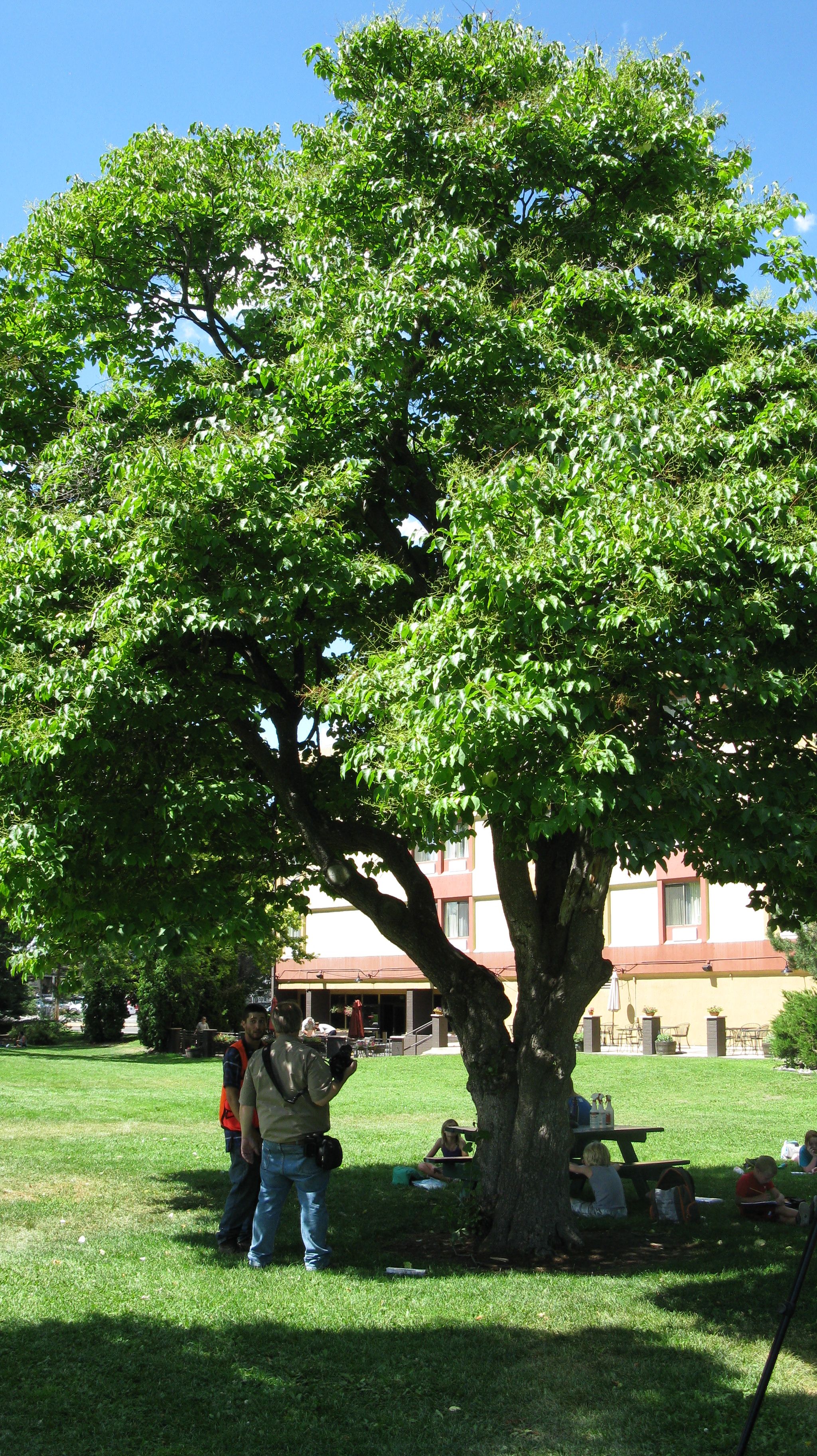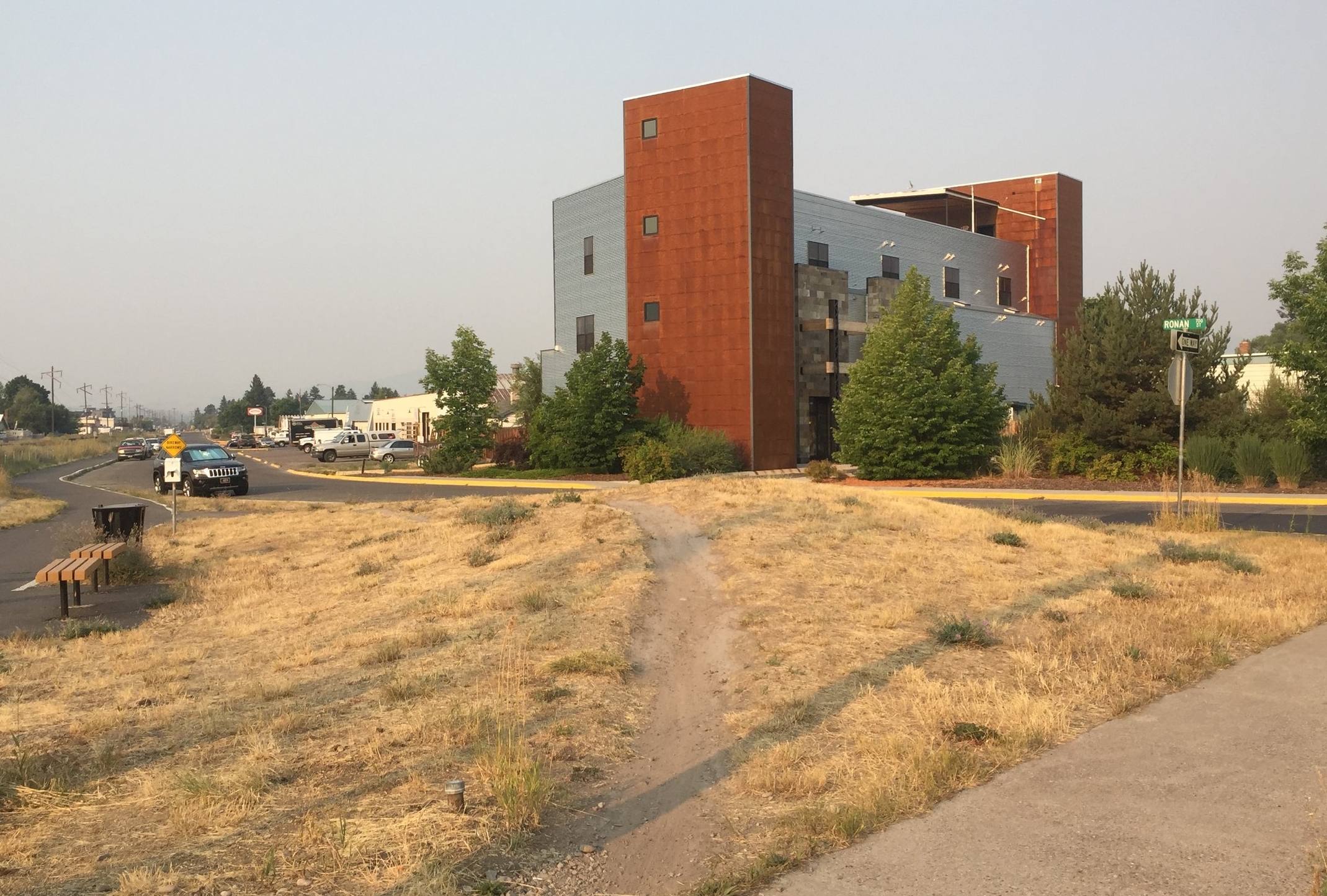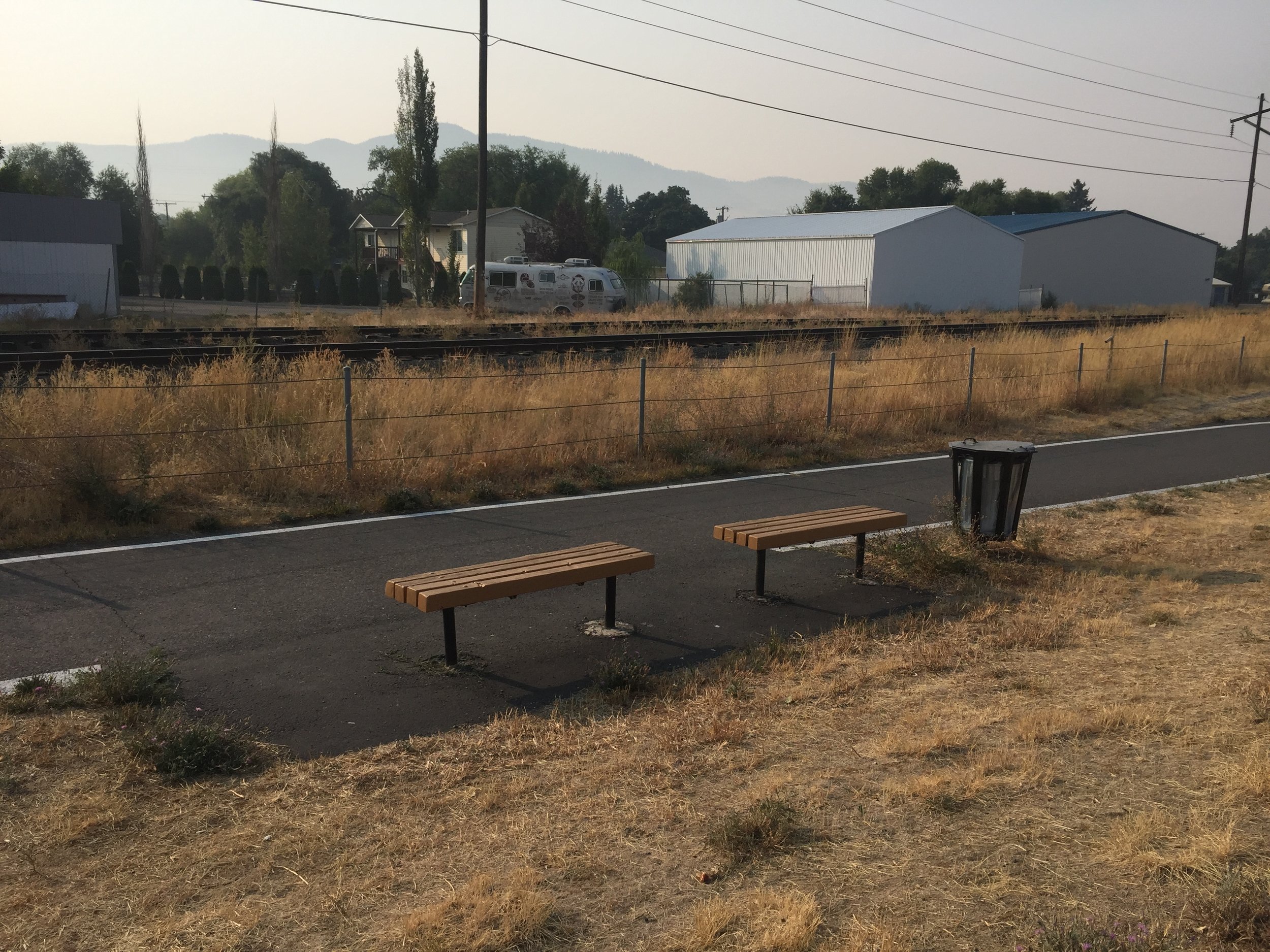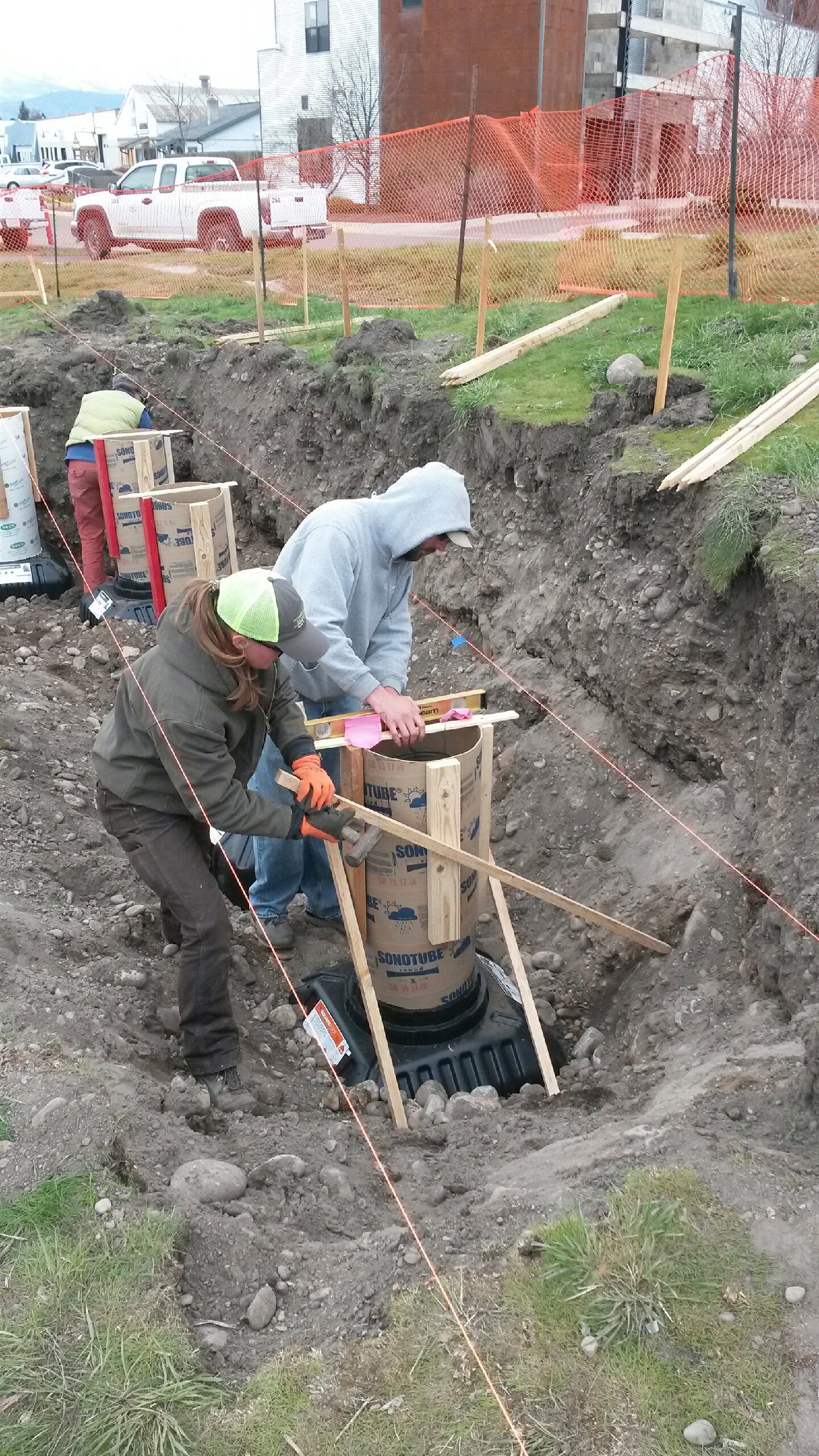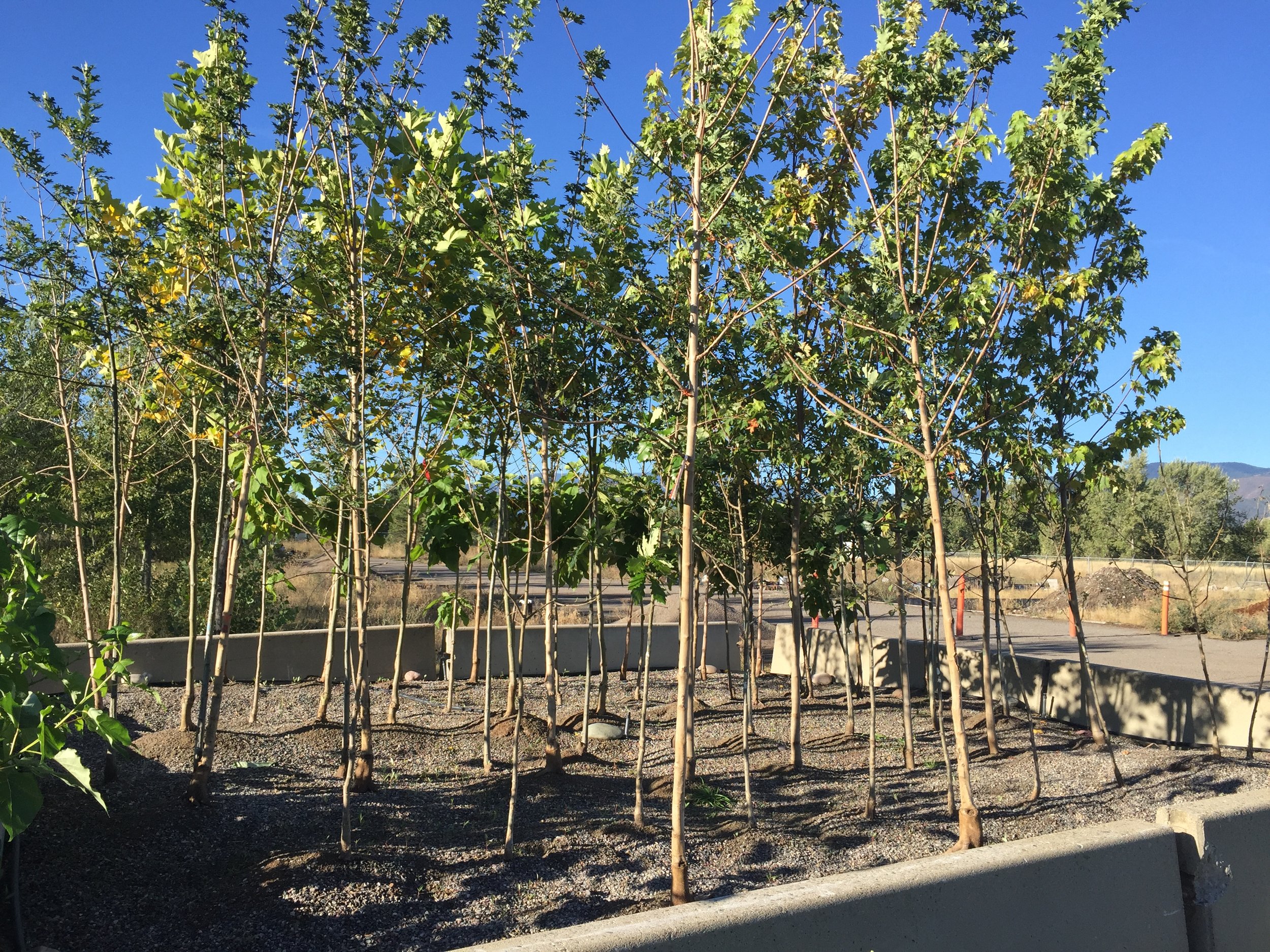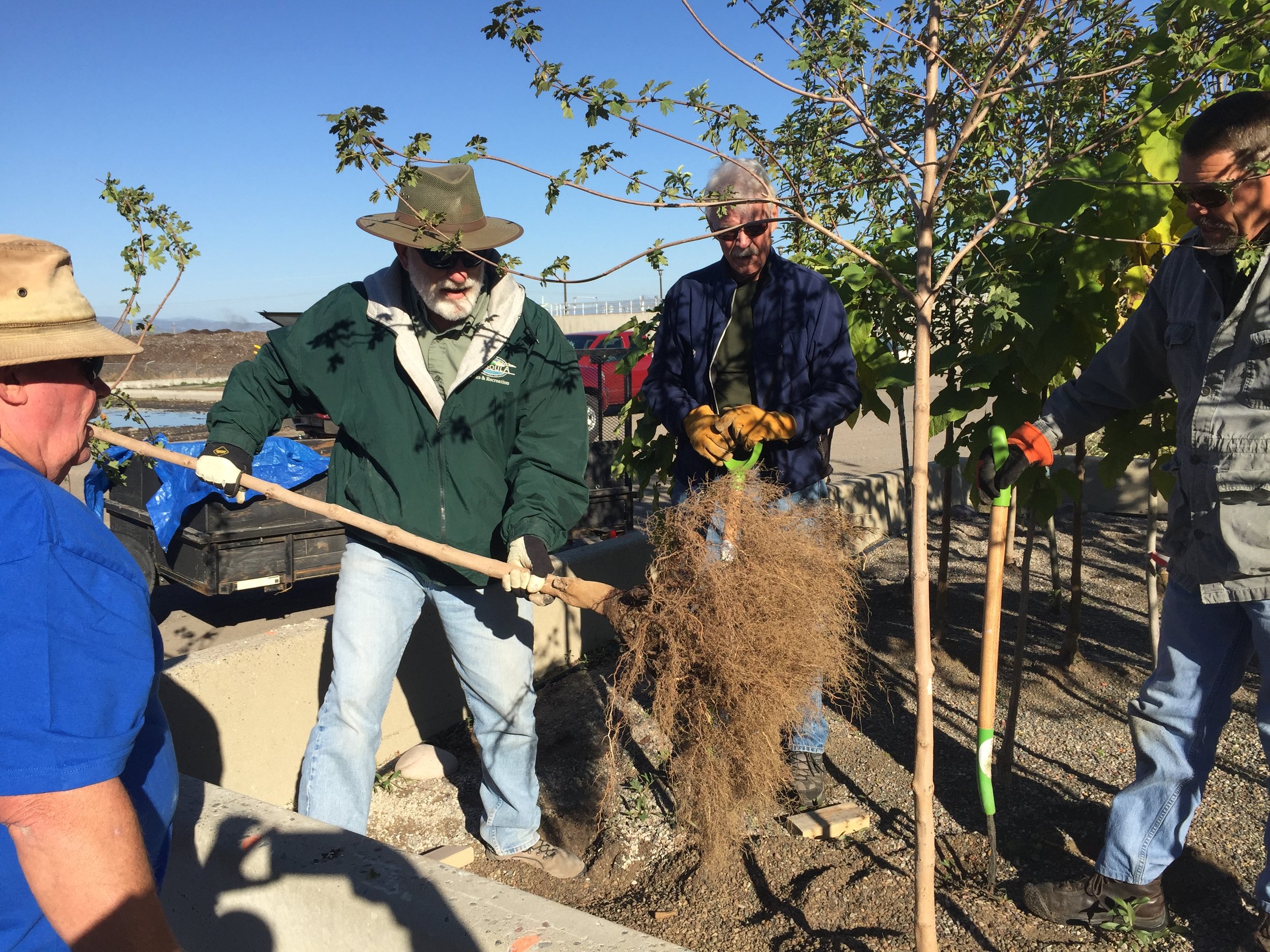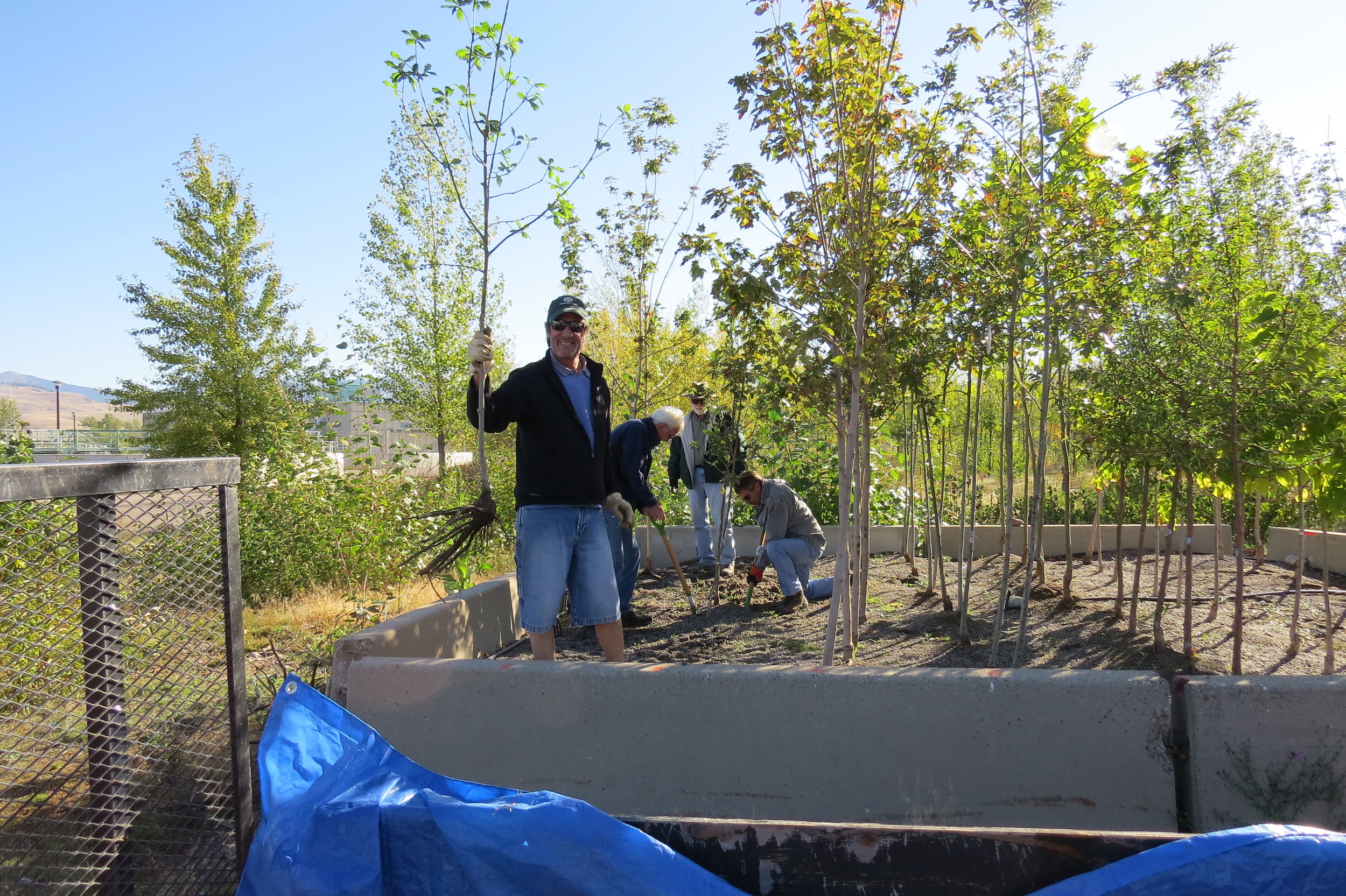Trees for Missoula seeks to improve our City’s environment, build community and connect Missoulians with the natural world and each other through a wide variety of projects.
Missoula Art Park Suspended Pavement System
In December 2015, Trees for Missoula (TFM), the City of Missoula Urban Forestry Division (UF) and Missoula Art Museum received a Department of Natural Resources and Conservation (DNRC) Program Development Grant to install a suspended pavement system at the Missoula Art Park.
October 2016, Montana’s first suspended pavement system was installed along with a Pacific Sunset Maple. The following graphic and text describing the system are on the sign adjacent to the tree at the Missoula Art Park.
Under this concrete is Montana’s first suspended pavement system. Unlike traditional tree wells, this system provides space for non-compacted soil, which gives roots the necessary room to grow, along with oxygen, water and nutrients vital to support a large and healthy tree.
Every tree that takes root carries with it a myriad of benefits to our health, quality of life and well-being – locally and globally.
Missoula Public Tree Inventory
“How can we help our urban forest?”
When Trees for Missoula (TFM) started meeting in 2011, it was soon realized that there was no easy answer to that question.
It was estimated that the City of Missoula Urban Forestry Division (UF) had 30,000 street trees to care for with limited staff, equipment and resources. However, with only a partial inventory from 2003, there was insufficient information to garner city council support.
In 2012, TFM and the UF received a Department of Natural Resources and Conservation (DNRC) program development grant to pay for two interns and TFM donated two Trimble GPS units to UF for the inventory.
For 14 weeks in 2013, three certified arborist UF staff, 24 TFM volunteers and two interns walked, mapped and evaluated over 24,000 public street trees.
Since then, UF staff have continued to inventory Missoula’s trees. As of May 2018, almost 29,656 public trees within city right-of-way and in parks have been mapped, evaluated and inventoried.
In 2018, TFM and UF are planning a 5-year inventory update. If you are interested in volunteering for this project, please fill out the volunteer form.
Shade Missoula Project - S. 6th St. W. and Bitterroot Trail
Build it, and they will come.
More people will get outside and exercise if there is easy access, places to rest and pleasant destinations to reach.
With these factors in mind, Trees for Missoula (TFM) with partners Climate Smart Missoula and Missoula InvestHealth began looking for a location, and found it along the Bitterroot Trail at S. 6th St. W.
In 2017, TFM received a Department of Natural Resources and Conservation (DNRC) Program Development Grant for a shade project that includes the installation of a shade shelter built from reclaimed lumber, large shade trees, native grasses and an irrigation system.
With TFM partners City of Missoula Parks & Recreation, Climate Smart Missoula, MMW Architects and HomeResource, the shade project will be installed May 2019.
Missoula Urban Forest Gravel Bed and Bare-Root Tree Nursery
An answer to two different needs.
Need One: Trees for Missoula (TFM) volunteers and other local groups wanted to plant trees, but planting trees in the Missoula valley can be difficult – from glacial rock to clay. Because larger trees are required to be planted on streets and in parks, they usually came in large containers or ball and burlap (BB) requiring large equipment to dig the holes.
Need Two: The City of Missoula Urban Forestry Division (UF) needed to find a more cost-efficient supply of trees, since thousands will need to be planted in the coming years.
The Answer: Bare-root trees heeled into a gravel bed. Bare-root trees do not require huge, machine-made planting holes and are about ¼ the cost of traditional containerized or BB trees.
In 2016, TFM and UF partnered to build a gravel bed to hold bare-root trees at Missoula’s Wastewater Treatment Facility (MWTF). It began with one gravel bed and 60 trees that arrived in early April. By late September, the trees’ fibrous root systems had fully developed and were ready for the volunteers to plant.
Missoula Urban Forest Gravel Bed is funded by:
TFM-donated gravel, sand, equipment rental and irrigation materials
MWTF-provided space and water
MDT-donated decommissioned jersey barriers
UF-purchased bare-root trees
For more information about gravel beds: All You Need to Know About Community Gravel Beds (linked PDF pending)



